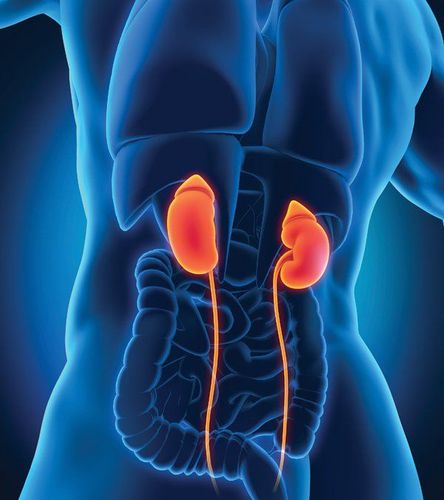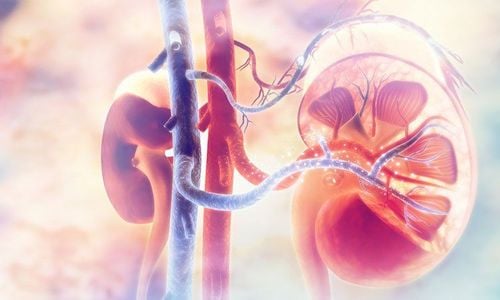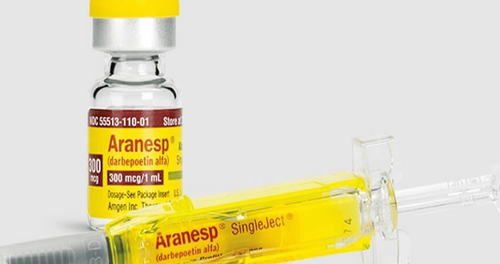This is an automatically translated article.
Peritoneal dialysis and hemodialysis and the two most common renal replacement therapies in patients with end-stage CKD. Each method has its own advantages and the two methods can complement each other.
1. Treatment methods for end-stage chronic kidney disease
According to statistics in the world, there are about 850 million people with chronic kidney disease, the number of patients who die every year is 2.4 million. If in the 1990s, chronic kidney failure was the 27th leading cause of death among the most common causes of death. Now, chronic kidney failure is ranked 6th. The number of patients with chronic kidney failure is increasing. increasing and the number of patients dying from chronic kidney failure is increasing. Patients with chronic renal failure currently account for 10-14% of the population of the country. The leading cause of chronic kidney failure today is diabetes, accounting for 50% of cases, followed by high blood pressure accounting for 30%.
Chronic kidney failure is divided into 5 stages, in which stage 5 is called end-stage renal failure, the kidney has completely or almost completely lost its function. The kidneys cannot perform the function of excreting toxins, waste products in the process of metabolism and excess water from the body, to maintain life, patients need kidney replacement therapy. There are 3 main methods of kidney replacement treatment currently available: kidney transplantation, peritoneal dialysis and hemodialysis.
Kidney transplant is the transplant of a healthy kidney from a donor to replace the kidney that has lost its function in a patient with end-stage renal failure. However, this method is difficult to perform because the donor kidney is very small and it is also difficult to find a compatible kidney. Therefore, the majority of patients use the remaining two methods of treatment, peritoneal dialysis and hemodialysis. Which method to choose depends on the specific condition and condition of the patient.
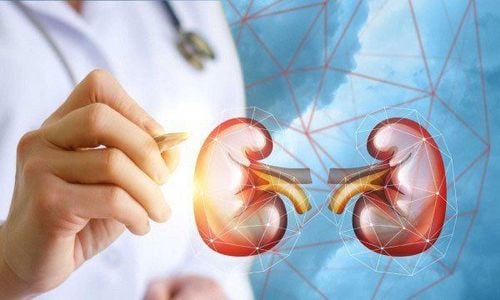
Ngoài phương pháp chạy thận nhân tạo và lọc màng bụng đối với bệnh nhân suy thận, còn có phương pháp ghép thận
2. Method of hemodialysis
Hemodialysis is a method of filtering blood outside the body. The patient's blood will be directed into the filtration system of the hemodialysis machine. The machine will help filter out toxins and excess water. After filtration, the blood is returned to the patient's circulation.
A few weeks to several months before starting dialysis, the patient will have FAV surgery. Surgery is usually performed on the wrist and usually on the non-dominant hand for the patient's convenience in work and life. The surgery helps to connect arteries and veins to increase blood flow in this area, convenient for needle puncture to collect blood to put into dialysis machine and return needle after being filtered.
The patient will undergo hemodialysis 3 days a week, every other day, each dialysis lasts 3-4 hours. During dialysis, patients may have symptoms such as blurred vision, abdominal pain, shortness of breath, nausea or vomiting, cramps, .. When the body has any abnormal signs, the patient needs to be informed. Immediately notify medical staff for timely intervention.
Patients on hemodialysis need to have a diet with reduced salt and potassium-rich foods, limit drinking a lot of water, especially on non-dialysis days. Patients also need to pay attention to FAV care, daily cleaning with soap and warm water. FAV hands should not carry heavy objects or be pinched (such as measuring blood pressure,...).
3. Peritoneal dialysis
Peritoneal dialysis is a method that uses the patient's peritoneum as a filter to help remove waste products and excess water from the body, replacing the lost kidney function. To perform this function, a catheter is surgically inserted into the patient's peritoneal cavity. This catheter helps to insert the dialysis fluid into the abdomen and drain the fluid after the dialysis is complete.
The peritoneum can help filter blood because the peritoneum is a semi-permeable membrane, allowing large concentrations of solutes and excess water in the blood to pass through the peritoneum and into the dialysis fluid compartment. Peritoneal dialysis is convenient for the patient, because the patient can do it at home, the patient only needs to go to the hospital once a month for the doctor to examine, check and receive the dialysis fluid for the next month. Peritoneal dialysis is especially suitable for patients in remote areas, patients who cannot access hemodialysis machines, or who have to go a long way to get dialysis to get dialysis.
During peritoneal dialysis with renal failure, if you do not follow the guided techniques and ensure hygiene, the patient is very susceptible to infection, especially peritoneal infection. Other complications that patients may encounter are hyperglycemia, dyslipidemia, pleural effusion,...
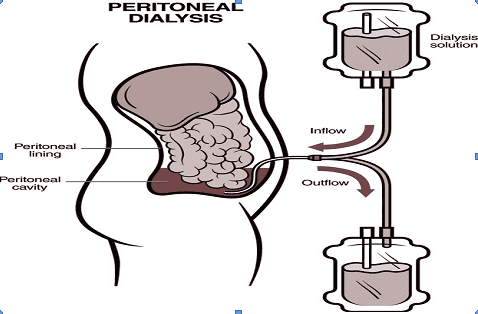
Lọc màng bụng suy thận có tác dụng lọc máu
4. Can the patient switch between peritoneal dialysis and hemodialysis?
The two methods of peritoneal dialysis and hemodialysis can support each other in the treatment of patients. If the patient has been on hemodialysis for a long time, the blood vessels are changed, the lumen is narrow, the blood flow is reduced, and the dialysis is not effective, then consider switching to peritoneal dialysis. In contrast, a patient with longstanding peritoneal dialysis, if efficacy is reduced, can be switched to hemodialysis. Right during the process, peritoneal dialysis patients can go to the hospital for dialysis 1-2 times a month to enhance the effectiveness of dialysis.Thanks to the development of kidney replacement therapies, patients with end-stage renal failure can now live decades, and their quality of life is also greatly improved. To maintain the effectiveness of treatment and limit complications, patients need to absolutely follow the treatment instructions of the doctor, have regular check-ups, and adjust their diet and lifestyle to suit their condition. and ongoing treatment.
To register for examination and treatment at Vinmec International General Hospital, you can contact Vinmec Health System nationwide, or register online HERE.
MORE:
Cases of chronic kidney failure with indications for peritoneal dialysis Complications of peritoneal dialysis in people with end-stage chronic renal failure Peritoneal dialysis for people with renal failure: What you need to know




